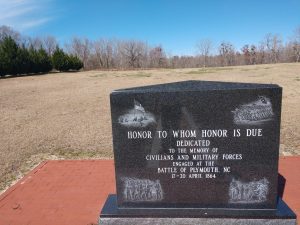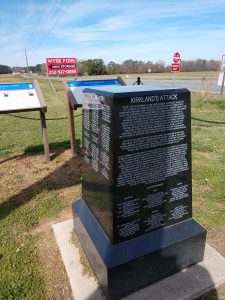Nutmeggers in North Carolina
Connecticut, known as the Nutmeg state, furnished 30 regiments of infantry in the Civil War and they fought far and wide during the conflict. Two of those units, the 15th and 16th Infantry, had unhappy fates in two lesser-known battles in eastern North Carolina.
The 15th was organized in August 1862 at New Haven and was then assigned to the defenses of Washington. It bounced around from the 9th to the 7th Corps, and found itself in various departments in Virgnia and eventually eastern North Carolina. The 16th was organized in August 1862 at Hartford and almost immediately joined the 9th Corps prior to Antietam. They fought in their first major battle without having any combat experience. Like the 15th, the unit was then sent to eastern North Carolina.
Fought nearly one year apart and separated by about 60 miles, the battles of Plymouth and Wise’s Fork in coastal North Carolina are largely forgotten in Civil War history. Plymouth, along the Roanoke River, had been occupied earlier in the war and had a garrison of Union troops. Naval vessels kept the isolated post supplied and kept it in communication with other forces.
In April 1864, Confederate forces led by General Robert Hoke approached, hoping to retake the town and eliminate this small garrison. The defending force consisted of parts of five infantry regiments, one of which was the 16th Connecticut. The southerners approached and began their assault on April 17.

Holding out for two days inside the fortified town, the defenders were overrun on the third day of the siege when the Confederates hit the weak eastern side. The entire 16th Connecticut, just over 400 men, were captured and soon on their way to Andersonville prison. By the way, the 16th was also the unit hit in the flank at Antietam by A.P. Hill’s division on their very first day of combat. They bore the brunt of that devastating attack.

Ironically, just one year later and sixty miles to the west, another Connecticut regiment suffered the same fate as the 16th at Plymouth. The 15th Connecticut was part of General Jacob D. Cox’s advance on Kinston and Goldsboro to link up with Sherman’s advancing army in March,1865.
Confederate forces under General Braxton Bragg hoped to stall the federal advance, and struck the Union troops just east of Kinston at Wise’s Fork on March 8. A flanking attack, again led by General Hoke, overwhelmed the defenders and scooped up nearly the entire 15th Connecticut, along with much of the 27th Massachusetts (both units also had a large number of new conscripts with no experience). About 890 Union prisoners were taken, and it would be the last large capture of Federal troops in the war, just a month before Appomattox.

The Federals ultimately won the battle at Wise’s Fork, stabilizing their line and forcing the Confederates to withdraw. Bragg abandoned Kinston and pulled back to link up with forces under Gen. Joseph E. Johnston, setting the stage for the battle of Bentonville.

Today you can visit these lesser-known battlefield and learn about these actions at the Port o’ Plymouth Museum (portoplymouthmuseum.org) and at the Wise’s Fork battlefield, which has a driving tour available (visitkinston.com). Two outstanding books on these engagements are “The Fight For The Old North State” by Hampton Newsome, and “To Prepare For Sherman’s Coming,” by Wade Sokolosky and Mark A. Smith. Currently a highway threatens a key part of the Wise’s Fork battlefield, including the area where the 15th Connecticut fought. Local preservationists are working to reach a compromise and it is hoped that parts of this still pristine landscape can be saved.

thanks Bert … i knew about the 16th CT getting snapped up in Plymouth, but had no idea the 15th suffered a similar fate so late in the war … appreciate you bringing that little known factoid to light … proof positive that Confederate arms were still resilient and dangerous animals until the bitter end … thanks again.
For those interested the NCDOT is planning on rolling over the greater part of Wyse’s fork battlefield with a highway interchange in the upcoming future. There is a planning meeting being held June 15 2022 from 1 to 4 at the Kinston NC public library with the Army Corp of Engineers.